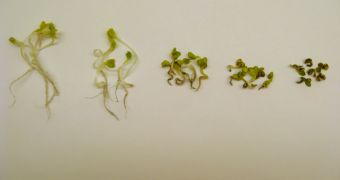In a study that could have significant implications for the future of nanotechnology, experts in the US determined that nanoparticles have the potential to accelerate DNA damage in plants. The research was carried out as part of a larger effort to analyze the overall safety of using nanoparticles.
The potential environmental, health and safety (EHS) risks that nanomaterials pose are of great interest to scientists, due to the large number of fields of science where nanoscale particles have applications.
These include advanced electronics, agriculture and medicine, to name but a select few. Until now, very few studies have been conducted on the impact that releasing nanoparticles into the atmosphere would have on the human body or the environment.
Due to their extremely small size, these particles can easily penetrate protective barriers such as skin, and will therefore contaminate living things. What experts are trying to determine is the response that various species and habitats will produce once this happens.
The new investigation was conducted by a collaboration of investigators from the US National Institute of Standards and Technology (NIST) and the University of Massachusetts Amherst (UMass).
Details of the work appear in a paper entitled “Copper oxide nanoparticle mediated DNA damage in terrestrial plant models,” which is published in the journal Environmental Science and Technology.
During the study, a team led by NIST chemist Bryant C. Nelson demonstrated that cupric oxide nanoparticles can easily penetrate cells in plant roots, and trigger mutagenic DNA base lesions.
They used radish, a common food crop, and two species of ryegrass (a plant commonly grazed by cattle) as test organisms for this research. The nanoparticles analyzed in the study ranged from 1 to 100 nanometers in diameter.
“To our knowledge, this is first evidence that there could be a 'nano-based effect' for cupric oxide in the environment where size plays a role in the increased generation and accumulation of numerous mutagenic DNA lesions in plants,” Nelson explains.
The researcher and his team are now getting ready to start a new investigation, which will analyze EHS risks for another commonly used type of nanoparticle, titanium dioxide.

 14 DAY TRIAL //
14 DAY TRIAL //